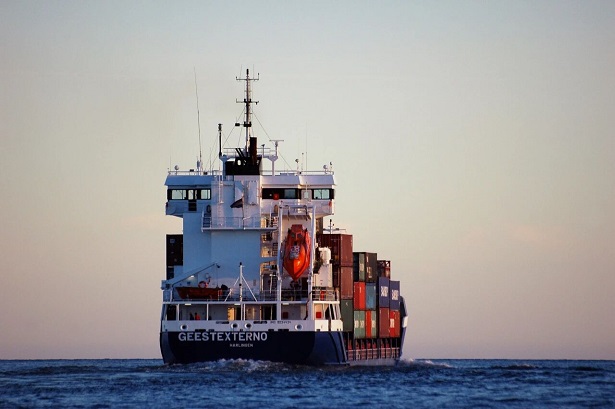Which Country Has The Most Purchasing Potential In The European After COVID-19
Views : 1140
Author : Bozhou Marine
Update time : 2020-11-11 16:11:43
According to the "GfK Europe Purchasing Power Report 2020", the total disposable amount of Europe in 2020 will be nearly 9.5 trillion euros, that is, the per capita purchasing power will be 13,894 euros. Affected by the epidemic, this year has decreased by nearly 5.3% compared with last year.
Among the countries studied, Europeans differ greatly in food, life, services, energy, private pensions, insurance, holidays, mobility, and consumer purchases.
COVID-19 has had a major impact on household net disposable income
Liechtenstein ranks first among 42 European countries surveyed with a per capita purchasing power of 64,240 euros, far surpassing other countries and 4.6 times the European average. The top three in purchasing power are Switzerland and Luxembourg, the same as last year. The per capita disposable expenditure in Switzerland is 41998 euros, more than three times the European average, while the per capita purchasing power of Luxembourg is 34119 euros. This is 2.5 times the European average. The purchasing power per capita in 16 countries is higher than the average level, while the purchasing power per capita in 26 countries is lower than the European average. Ukraine ranks last with a per capita purchasing power of 1,703 euros.
Among the top 10 purchasing power, Liechtenstein and Switzerland have the highest per capita net disposable income in Europe. They are also the two countries least affected by the crisis. In Liechtenstein, the impact of the coronavirus is about 85% lower than the European average, while in Switzerland it is about 74% lower than the European average. Iceland and Norway, which occupy fourth and fifth places in purchasing power rankings, underperform in the Corona Impact Index, which are respectively 58% and 63% higher than the European average. Both countries have been hit by the coronavirus pandemic, and one of the reasons is the depreciation of their currencies against the euro. Among the 42 countries ranked, Turkey is ranked last, whose impact index is more than 2.8 times higher than the European average.
Italy: There are huge differences between North and South
In Italy, the per capita purchasing power is 16,439 euros. In this study, the average ranking of Italians is 16% and 42% of European countries.
There is a clear North-South gap in the distribution of purchasing power between the rich North and the poor South of Italy. All the top ten provinces are located in northern Italy. The province of Milan still tops the list. The per capita purchasing power of the fashionable metropolis is 23,507 Euros, which is 43% higher than the national average and 69% higher than the European average.
The 10 least affluent provinces are all located in southern Italy. The last place is Croto, which is located in the southernmost part of the country. The per capita purchasing power of residents in the province is 9119 Euros, which is about 45% lower than the national average and about 34% lower than the European average.
Spain: Alone in midfield
Spain’s per capita purchasing power in 2020 is 13,613 Euros, which is only 2% lower than the European average.
In the ranking of Spanish provinces, the southernmost province of the three provinces in the Basque Country, Arava, once again ranked first. The per capita consumption expenditure of residents in the province is 17,620 euros, which is more than 29% higher than the national average. Some changes have taken place in the top 10 this year.
Spain’s least affluent provinces are located in the southwest of the country. The last place this year is Badajoz, Spain’s largest province, with a per capita purchasing power of 9,975 euros, which is about 27% lower than the national average.
Poland: Gap between rich and poor
The per capita purchasing power of Poland is 7,143 Euros, slightly higher than half of the European average (51%), and it ranks 28th in Europe's purchasing power rankings.
The purchasing power of 380 counties in Poland varies greatly. Among them, the purchasing power of 17 counties is at least 20% higher than the national average, and 106 counties are 20% lower than the national average. The per capita purchasing power of Warsaw is 12,120 euros, ranking first. The amount of money spent by Warsaw residents for consumer spending and savings is nearly 70% higher than the Polish average. The per capita purchasing power of Schdwolfjez County is 4,721 Euros, which is equivalent to 66% of the Polish average and 34% of the European average, which is the bottom of Poland.
Czech Republic: The country's largest city and its surrounding areas have the highest purchasing power
The per capita purchasing power of the Czech Republic is 9179 Euros, which is nearly 34% lower than the European average and ranks 25th among the 42 countries studied.
The Prague area of the capital once again ranked first in the purchasing power rankings. Residents in this area have 11961 euros available for consumption and savings, which is more than 30% higher than the national average. However, the purchasing power of Prague residents is still 14% lower than the European average. The purchasing power of the neighboring regions of Praha-zapad and Praha-vychod is also above average, as is the second largest city in the Czech Republic, Brno mesto.
Hungary: the highest purchasing power around the capital and the Austrian border
The per capita purchasing power of Hungary is 6,871 euros, slightly less than half of the European average. Therefore, Hungary ranks 30th.
Looking at the 20 counties in Hungary, the regions with the highest purchasing power obviously retained their place on the rankings. Budapest County, the capital, continues to lead the list with a significant advantage. The average per capita of Budapest’s residents is 8,627 euros, and its purchasing power is nearly 26% higher than the national average, but still nearly 38% lower than the European average.
5 of Hungary’s 20 counties have above-average purchasing power. All these counties are located in and around the capital Budapest, facing the Austrian border. In contrast, the purchasing power of three-quarters of Hungary’s counties is below average. The last place is Szabolcs Szatmar Bereg, whose per capita purchasing power is 5392 Euros, which is lower than the national average of 79% and about 39% of the European average.
 China's Import and Export Data
China's Import and Export Data
 Latest Progress of China-Europe Freight Trains
Latest Progress of China-Europe Freight Trains
 2025 Chinese military parade
2025 Chinese military parade